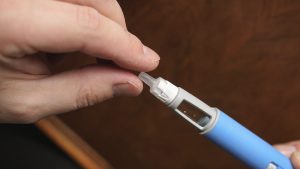Navigating Cord Blood Storage Controversies: Cordlife’s Refund Strategy and Rising Legal Challenges
In the wake of significant cord blood storage damages, Cordlife, a prominent private cord blood bank, has embarked on a refund initiative for affected families. This situation has not only brought attention to the critical role of cord blood in medical treatments. It also raises questions about the reliability and responsibilities of cord blood banking services. As dissatisfaction among parents grows, Cordlife faces potential legal challenges. This highlights the need for stringent quality controls in this vital healthcare sector.
Understanding Cord Blood Storage and Its Importance
Cord blood, collected from the umbilical cord and placenta after birth, is increasingly recognised as a vital source of stem cells. These cells have shown promise in treating a variety of malignant and non-malignant diseases. This is attributed to their unique progenitor characteristics, immunological immaturity, and high plasticity. The process of cord blood banking is crucial as it provides a potentially life-saving resource for medical treatments.
Public, private, and direct donation banks are the three main types of cord blood banks, each playing a distinct role in healthcare. The therapeutic uses of cord blood are vast, and ongoing clinical trials continue to reveal its potential in developing effective therapies and treatments for rare disorders.
Furthermore, the importance of cord blood donation has been emphasised in medical ethics discussions. The Royal College of Obstetricians and Gynaecologists (RCOG) highlighted the need for more focus on cord blood usage in research, which is crucial for expanding its applicability in patient care.
As more biobanks worldwide establish themselves, the importance of ethical and legal aspects surrounding cord blood and tissue banking is gaining prominence.
Cordlife’s Response to Cord Blood Storage Complications
Cordlife’s decision to offer refunds to parents affected by the compromised storage of cord blood units represents a critical response to an unexpected healthcare challenge. This initiative comes after the discovery of damage to a number of cord blood units, under 2,200 in total, which were stored in one of Cordlife’s facilities. The damage rendered these units unsuitable for their intended use in stem cell transplants, a vital medical procedure for treating a range of serious conditions.
Parental Discontent and Legal Actions
The reaction from the parents affected by the cord blood storage damages at Cordlife has been predominantly one of dissatisfaction and concern. The refund offered, while intended as a remedial measure, has not been received as adequate compensation for the potential loss of a crucial health resource. The sentiment among these parents is that the financial reimbursement does not equate to the value and importance of the stored cord blood, which could have life-saving implications for their children.
This discontent has manifested in a group of parents, numbering under 100, who are actively considering legal action against Cordlife. Their grievances are not just about the monetary aspect. It’s also about the perceived inadequacy of Cordlife’s response to a situation that has significant emotional and health-related implications. These parents believe that the company’s accountability extends beyond mere financial compensation. There are calls for a more comprehensive response that addresses the loss of trust and the potential health repercussions for their children.
The situation highlights the complex interplay of ethical, legal, and emotional factors in the healthcare sector. Particularly in services like cord blood banking, where the stakes involve potential life-saving treatments. The unfolding legal challenges also highlight the need for stringent quality control and accountability measures in the healthcare industry, particularly in areas dealing with sensitive and vital medical resources like cord blood.
Individual Stories Highlighting the Impact
The case of Bobby Lim, a special needs educator, brings a personal dimension to the Cordlife controversy. He discovered the damage to his child’s cord blood only after receiving the refund letter from Cordlife, despite having invested over $2,000 in enrolment and processing fees since 2009. This situation not only signifies a financial loss but also a loss of a potentially life-saving resource for his child. The lack of prior communication from Cordlife added to his distress, indicating a gap in the company’s client communication protocols.
Similarly, a retiree known as Mr. L.T. expressed his concerns, highlighting the inadequacy of the refund. For him, and many others, the issue is more than just financial compensation; it’s about the principle and the trust placed in Cordlife as a custodian of a critical health resource.
These individual accounts exemplify the broader sense of betrayal and anxiety among the affected parents.
Cordlife’s Efforts and Future Directions Amidst the Crisis
In response to the cord blood storage issue, Cordlife has undertaken several measures. The appointment of a new group executive officer signifies a potential shift in management and operational strategies. This change could be a step towards restoring trust and implementing more robust quality control measures.
The company has also been engaging with the Ministry of Health (MOH) to strengthen laboratory processes and staff training, aiming to prevent a recurrence of such incidents. These efforts indicate Cordlife’s acknowledgment of the need for improvement in their operational standards.
Moreover, Cordlife has been keeping the approximately 1,800 affected clients informed about their course of action and individual communication regarding the refund or fee waiver offer. This communication is crucial in maintaining transparency and rebuilding trust with their client base.
As the company navigates these challenges, the effectiveness of these measures in restoring client confidence will be closely watched. The situation at Cordlife highlights the importance of stringent quality control and accountability in healthcare services. Especially those involving sensitive and potentially life-saving resources.
References
- Ying, L. L. (2024, February 20). Cordlife begins offering refunds to affected parents. The Straits Times. https://www.straitstimes.com/singapore/cordlife-begins-offering-refunds-to-affected-parents
- Sivakumaran, N. (2018, February 21). Umbilical Cord Blood Banking and its Therapeutic Uses. arXiv.org. https://arxiv.org/abs/1802.07450
- Chan, S. (2006, November 1). Cord blood banking: what are the real issues? Journal of Medical Ethics. https://doi.org/10.1136/jme.2006.018994














